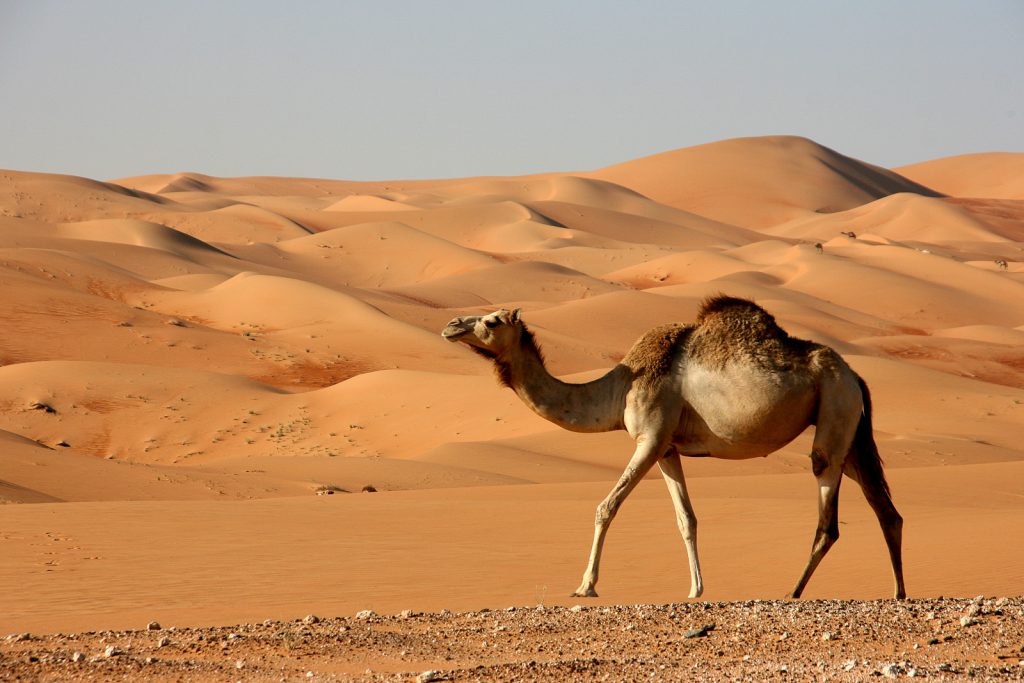Camels and I do not see eye to eye and have mutually agreed that it is for the best that we lead separate lives.

The Arabian camel is a single-humped dromedary with a sharp, bony spine that it is exceptionally unpleasant to sit on. That accounts for my position on camels.
As for why camels do not like me, I can only speculate. It might have to do with how the camels perceive the discrepancy between their own load-bearing capacity and how I look to them. Smart animals.
Since the arrival of the hard-top road, the lorry, and the 4WD, the camel is no longer part of the Emirates’ transportation system. Still, the Emiratis, much to their credit, do not willingly abandon their heritage. Some 300 000 camels are kept, mostly for racing, a sport the Gulf Arabs revel in.
As with horses, camel racing is all about retaining control without burdening the animal with too much weight. For this reason, the camel jockey of yesteryear was a good deal younger than one might care to remember.
Luckily, the last twenty years have seen significant modernization to the sport. Since 2002, the age limit for camel jockeys in the Emirates was raised to 15 years. Nowadays, however, camels are increasingly jockeyed by robots.
It is an odd meeting between high-tech and low-tech to see camel races with a robot jockey at the reins, remote-controlled by an overjoyed Emirati racing alongside the camel from the comfort of a car.



Comments are closed